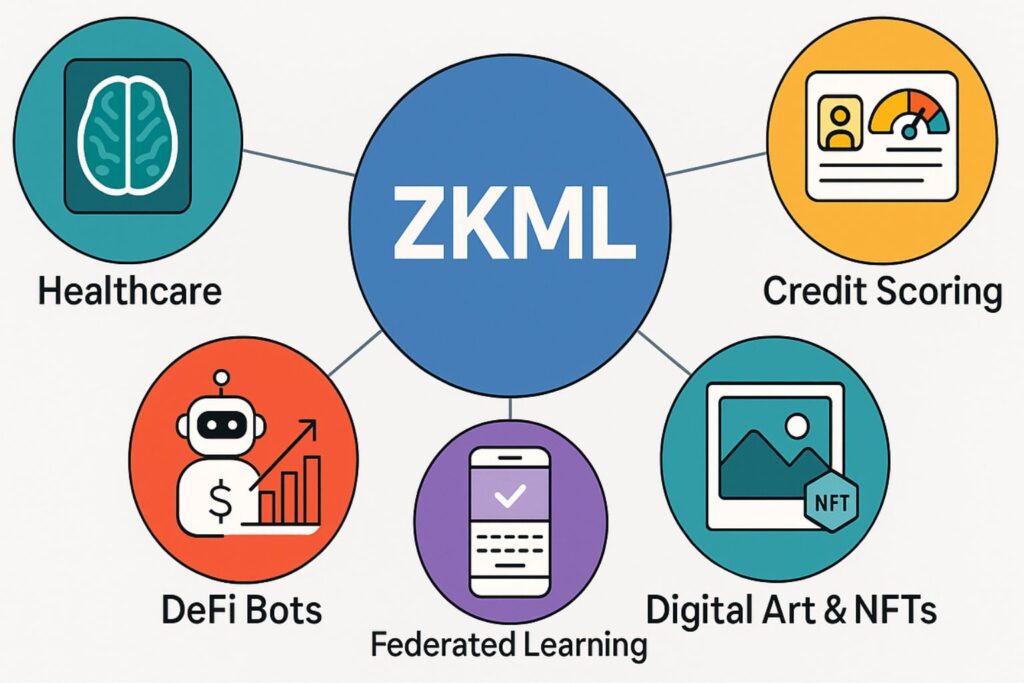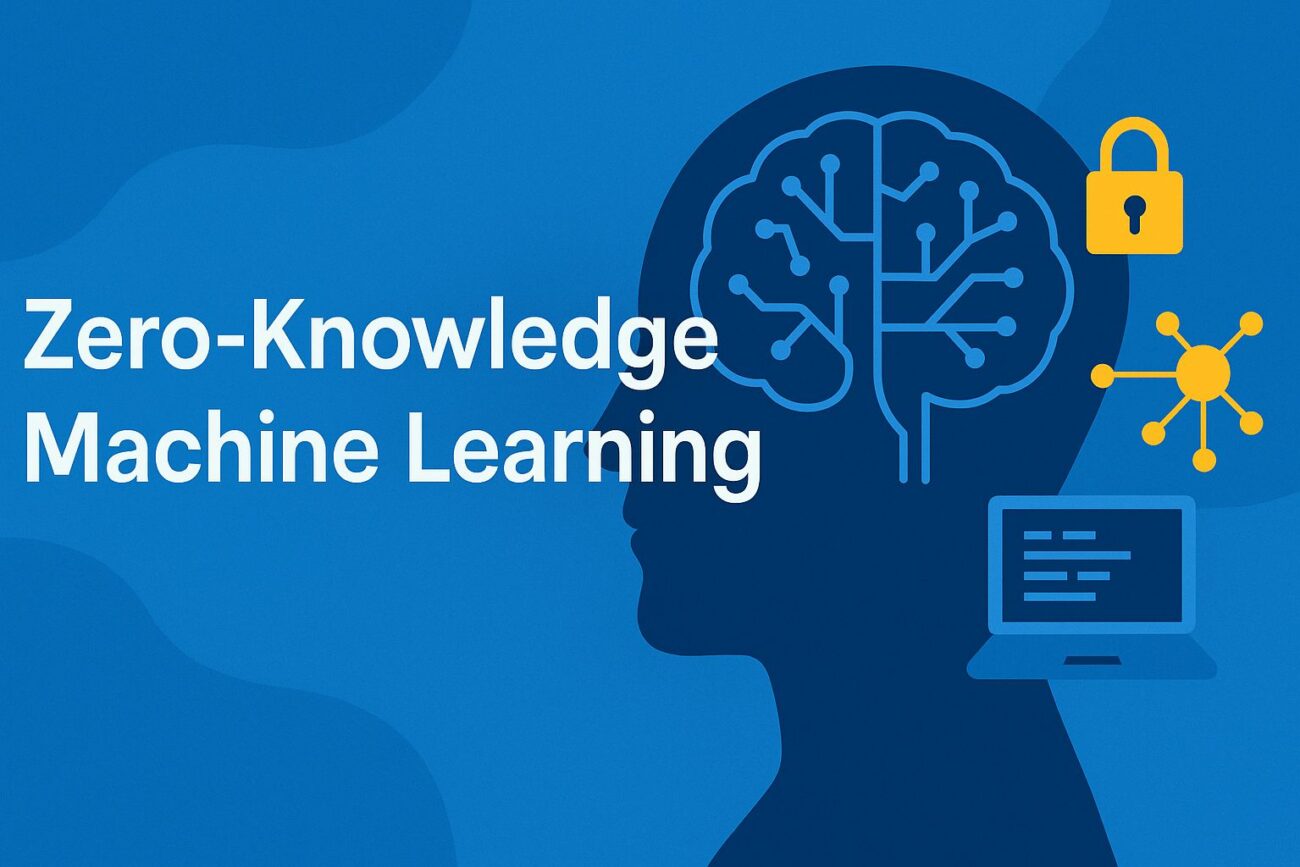So you’ve heard the buzzwords—zero-knowledge proofs, zk-SNARKs, privacy-preserving AI—and thought, “Sounds cool, but what does any of this have to do with machine-learning models and my daily tech life?” Grab a coffee and settle in. This post breaks down zero-knowledge machine learning (ZKML) in plain English, shows why it matters, and sprinkles in real-world examples you can actually relate to. Let’s dive in!
What Is Zero-Knowledge Machine Learning
Zero-knowledge machine learning combines cryptographic zero-knowledge proofs with ML models so you can prove a computation was done correctly without revealing the raw data or the model’s secret sauce. In practice, a model can run on your private input, spit out a result plus a tiny proof, and anyone with the verifier can check that proof and trust the result—no data leaks, no blind faith.
A Quick Origin Story
- From crypto to AI: Researchers borrowed zero-knowledge ideas from blockchain security to tackle AI’s “black-box” trust problem.
- Early 2020s breakthroughs: Faster proof systems (think modern zk-SNARK and zk-STARK schemes) made it realistic to verify small neural nets in seconds rather than hours.
- Real demos: Projects like Modulus Labs proved on-chain trading bots, while Worldcoin used ZKML to keep iris scans private. Suddenly, ZKML wasn’t a classroom thought experiment any more.
How Does ZKML Work Under the Hood?
- Quantize the model: Convert floating-point weights into fixed-point integers friendly to proof circuits.
- Generate the proof: Run the model on your input; a prover circuit records every arithmetic step and packages that into a succinct proof.
- Verify anywhere: Anyone—your phone, a blockchain smart contract, or a partner company—runs the lightweight verifier. If the math checks out, they accept the result. If not, game over.
Current Tools and Frameworks You’ll Bump Into
- EZKL : Drag-and-drop ONNX models, get Halo2 proofs—perfect for hackers and hackathons.
- RISC Zero: A STARK-powered virtual machine; write normal Rust/C++ code, get a proof of execution.
- Circomlib-ML: Pre-built circuits for convolution layers, ReLUs, and friends—no need to reinvent the wheel.
- Mina zkML & StarkNet/Giza: Blockchain-native playgrounds for on-chain verification.
- Concrete ML (FHE): Not strictly ZK, but often paired with proofs when you need both privacy and verifiability.
Practical Use Cases of Zero-Knowledge Machine Learning You Can Relate To

- Healthcare: Prove an MRI cancer-detection model ran correctly—without sharing the MRI or exposing model weights.
- Credit scoring: A bank can show regulators it used only approved data for your loan decision—no hidden bias.
- DeFi bots: On-chain trading strategies verified by zk-proofs, so rug pulls become mathematically impossible.
- Federated learning: Your phone trains the global keyboard model and attaches a proof so Apple knows you didn’t poison the weights.
- Digital art & NFTs: Artists attach a proof that their AI generator really created that one-of-a-kind piece.
Benefits of ZKML Beginners Should Care About
- Data privacy first: Your data stays yours; proofs reveal nothing.
- Trust without peeking: Results are auditable by math, not marketing.
- Model IP protection: Companies share capability, not code, so trade secrets stay safe.
- Reg-tech ready: Auditors can verify fairness or compliance without uncovering personal info.
Hurdles & Trade-Offs to Watch in ZKML
| Challenge | Why It Matters | Work-arounds |
|---|---|---|
| Proof generation speed | A tiny ResNet can take minutes to prove. | Hardware accelerators, smaller models, smarter circuits. |
| Accuracy loss | Quantization and circuit-friendly ops can nudge accuracy down. | Retrain at lower precision, choose ZK-friendly activations. |
| Dev complexity | Cryptography + ML = brain melt for solo devs. | Use higher-level libraries (EZKL, Circomlib-ML). |
| Interpretability | Proofs don’t explain why the model decided. | Pair with explainable-AI tools for insights. |
Where Is Zero Knowledge Machine Learning Headed Next?
- Speed wins: Recursive proof systems (Nova, Supernova) and ASIC “ZK-coprocessors” are slashing proof times yearly.
- One-click in PyTorch: Expect export-to-proof buttons baked right into mainstream ML frameworks.
- Hybrid privacy stacks: Imagine running on encrypted data (FHE) and shipping a proof—double win for privacy.
- AI policy compliance: Regulators may soon ask for cryptographic receipts; ZKML is the ready-made answer.
Wrapping Up
Zero-knowledge machine learning sounds like sci-fi, but it’s already sneaking into healthcare, finance, and Web3 apps you might use tomorrow. For beginners, the key takeaway is simple: Zero Knowledge Machine Learning lets us keep AI smart and honest at the same time. That opens doors to safer, more transparent tech—exactly what we need as models get bigger and decisions more critical.
Curious to explore further? Bookmark this blog and keep an eye on emerging tools like EZKL and RISC Zero. The privacy-friendly future of AI is moving fast—hop aboard early and you’ll never have to choose between power and trust again.


